There are definitely times when Welcome to the Ballroom strikes me as “more Haikyuu! than Haikyuu!“. There’s just something about the overall tone of the series – it has a feckless exuberance that’s hard to miss. But one huge difference between the two series is that Ballroom has a definite thread of sexual politics running through it, which is basically a non-factor in Haikyuu!. That would seem to be something fundamental to the nature of the sport in question, though for a while it looked as if Ballroom e Youkoso was largely going to treat it as the elephant in the room. Now, however, it’s being tackled more or less head-on.
As we start out this week, Tatara is still on his level 1 quest to find himself a dance partner. For the moment he’s participating in group lessons to at least have the chance to dance with someone, and he’s only taken on an arubaito as way to pay for his lessons (while it’s never expressly stated, Tatara’s dad seems to be a man of modest means). He takes his job at a local cafe very seriously (which is perfectly in character) which is a source of great bemusement to the daughter of the owner, Koumoto Akira (Always great to have Aoi Yuuki join the party).
Convenience being plot’s best friend, Akira is not only a competitive dancer herself (she spots something familiar in Tatara’s posture), but also not just an acquaintance but the former partner of Chinatsu (a common occurrence among younger girls given the inevitable gender imbalance, but something that isn’t allowed in official competitions – in Japan at least – above the junior level). Akira is a big personality to say the least, and when Chinatsu stops by to drop off her old gear as a hand-me-down for Akira’s sister, the two ex-partners engage in a strutting match of epic proportions. During their partnership Chinatsu was the leader and Akira the partner – because Akira is “smaller and more feminine” (her words).
Rivalry certainly drives a lot of what happens in Ballroom e Youkoso, as indeed it does in most sports shounen, and it’s her simmering rivalry with Akira that prompts Chinatsu to declare she’ll partner with Tatara-kun after all so they can kick Akira’s ass in the Mikasa Cup. There’s a huge hill to climb before then, though – she and Tatara would have to enter a competition as novices and work their way up through Grand Prix first (apparently ballroom has a class system similar to karuta or shogi). And needless to say, that isn’t going to be an easy thing.
The question of leading and following is a difficult one here, because in theory it’s overtly sexist that the boy should always be the leader and indeed, that competitive couples must be mixed-gender. But in practice, Chinatsu is a pretty obnoxious person if we’re honest, and Tatara an earnest kid just trying to do his best. A boy not good at leading (though I’m not sure the evidence bears that out, actually) and a girl who can’t follow is a bad combination, even for the novice level. At their first competition together they survive a disastrous first round where Chinatsu-chan changes their routine from practice, and only manage to perform decently (perhaps well enough to finish second and move up to Class D) in the finals because Tatara engineers a sort of “no-leader” hybrid style on the fly.
It really seems that Tatara can’t catch a break – no matter what he does he never gets any credit, only criticism (even from Kiyoharu’s mom). But truthfully I don’t think he’s the problem here. Fundamentally competitive dance seems to be a sports that draws in showy athletes with big egos – as you would expect. But Tatara is the opposite of that – he’s more about adapting to his partner than imposing his will on the partnership. Personally I don’t think he was “letting the girl do all the work” here at all – in fact, I think he was saving the day by improvising and using his instincts (which is damn hard work). Maybe, in his way, Tatara is forging his own style of ballroom dance here – leading while adapting to show off his partner’s strongest qualities. Perhaps someday he’ll get some credit for that – though given the previous 14 episodes, I wouldn’t bet it will be anytime soon.






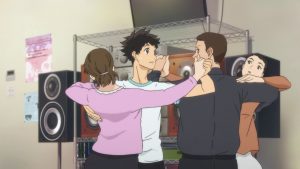


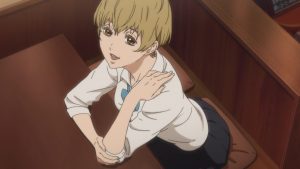










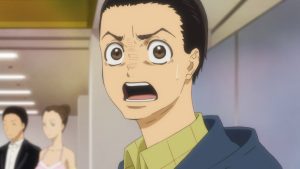

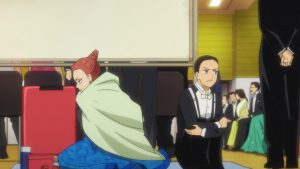
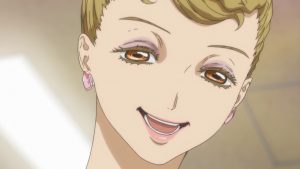
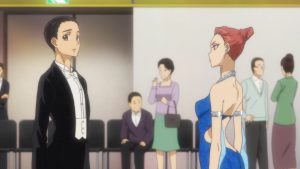
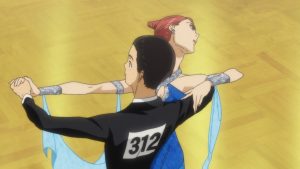

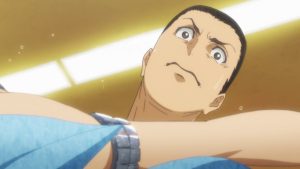
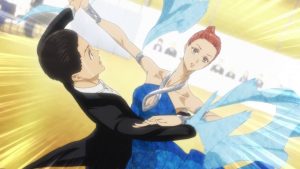



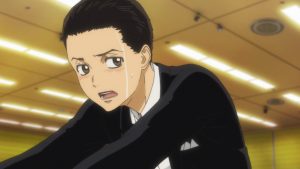
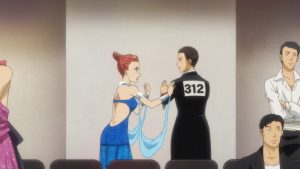
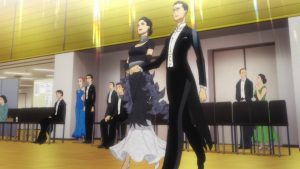
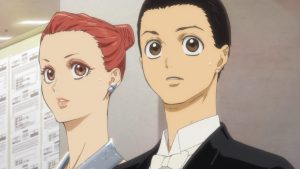

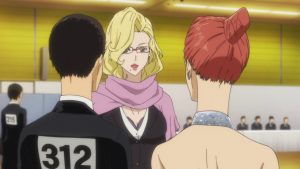






Skidda
October 9, 2017 at 1:19 amNot commenting too much on your reviews since I’m a manga reader but it’s pretty interesting how I had the same impressions around this part of the story.Tatara has a supportive cast around him but it seems like the mangaka really wanted to depict the world of ballroom dance as a kingdom full of self-centered jerks (not a bad thing, they’re still lovable enough for me). Tatara with his empathy really shines among them so it can be a bit disheartening to see his style dismissed like that by Hyodo’s mom.
About the pecuniary aspect of the sport, the anime skipped some important details. It can be quite expensive, like Chinatsu’s dress which was rented, but Tatara has been «scot-free» so far because Sengoku didn’t ask any coaching fees and the others at the studio thought his lessons were too awful anyway.
Guardian Enzo
October 9, 2017 at 7:43 amYeah, I know he got Hyodo’s old practice pants and an old pair of shoes for free, too. But as any parent can tell you, their kids’ sports activities can get mighty expensive. And boys Tatara’s age can outgrow things like shoes and tuxedos mighty quickly (though admittedly there’s no sign of that in his case).
Molly
October 9, 2017 at 3:11 amYour intuition is pretty right, Enzo because there is a distinct sense that the partner only matters as long as the leader is good. So, in that regard, the partner is more or less treated as a second class dancer which is mildly put, really off-putting.